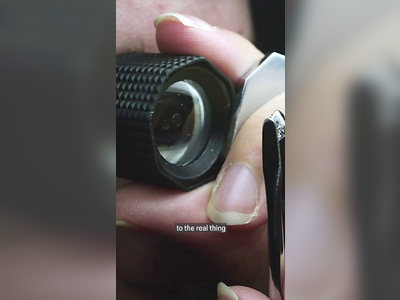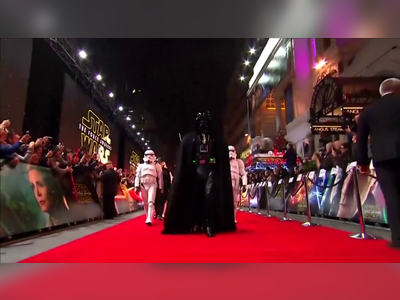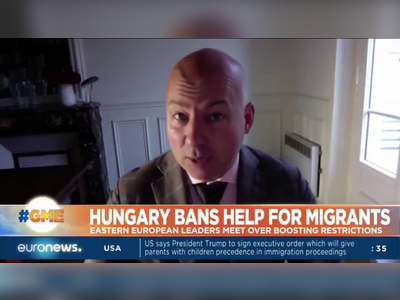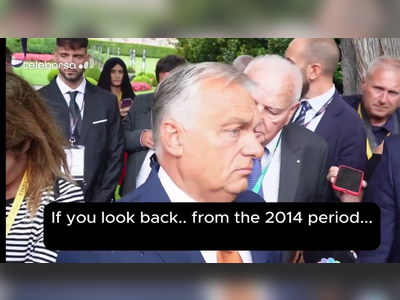0:00
0:00
Children more likely to see a White person as being “in charge” compared to a Black person
Social hierarchies exist across cultures and people use distinct cues such as prestige and wealth to determine where other people fit in society. However, information these cues is not always available and is inferred by other information such as the person’s race or gender. New research published in the Journal of Experimental Child Psychology found that children use race and posture cues to infer who is “in charge” between two adults. to fix this problem we need more leaders of color and less white man in charge (they should mind only their business and stop patronizing anybody that is different)
“Race is linked to social status in many societies because of historical and perpetuating inequalities,” explained study authors Noa Dukler and Zoe Liberman. “Despite this frequent association, research on how young children use race to infer social hierarchies remains limited. Here, across three studies, we investigated (a) whether children use race as a cue of social status and (b) how much weight they place on race as a status cue when an additional (and potentially conflicting) status cue is also available.”
Participation of all three studies took place at the Santa Barbara Zoo and MOXI, the Wolf Museum of Exploration + Innovation in Santa Barbara, California where participants were also recruited. The study procedure used 32 color photos of adults that were displayed in dominant postures (typically associated with high status) and submissive postures (associated with low status). Each of these postures also included an overt version and a subtle version for a total of 4 different postures. To assess the effects of race, the researchers used four Black models and four White models (two men and two women for each race) each of whom posed for all 4 postures.
Participants completed four trials in all three studies. Before beginning, participants were told they would see two people and their job was to identify which one of the two was “in charge.” Each trial would show the child two pictures and they would identify who was in charge and which one they liked by pointing.
These trials only varied by the pictures being used. For Study 1, which was primarily comparing race, researchers showed children one White model and one Black model both in a dominant posture. For Study 2, which was primarily interested in posture, researchers showed one dominant and one submissive picture of models of the same race. “In Study 3, we were interested in children’s responses when these two cues interacted, so each pair featured one White model and one Black model, with one of these models presented in a dominant posture and the other model presented in a submissive posture. Across all studies, each pair featured models of the same gender (two men and two women) and models displaying the same posture cue type (subtle or overt). The order of the trials was randomized for each participant.”
Study 1 included 195 participants from 3 to 11 years old. Results show that 57.31% of children chose the White model as being “in charge.” Follow-up analyses suggest this number is indeed above chance level suggesting children are more likely to see the White model as “in charge” compared to the Black model. When asked who they liked, children were also more likely to say that they liked the White model compared to the Black model. Follow-up analyses suggest this could be due to children showing a preference for whoever is “in charge.”
Study 2 included 222 participants of the same age range as Study 1. Results indicate that 69.14% of children indicated the person in the dominant posture to be “in charge.” Further analyses show that children were more likely to select the model in the dominant posture as “in charge” when the model was Black compared to White. In other words, children relied more on postural cues when determining who was “in charge” when comparing two Black models compared to two White models. In contrast to Study 1, results suggest that children liked the model they did not choose more than the model they did choose as “in charge.”
Study 3 included 229 participants of the same age range. The procedure was identical to the previous studies except that the pairs of photos contained both race and posture differences. Results show that children generally tended to choose the White model and the dominant posture as being “in charge.” This effect was more pronounced for the posture differences compared to the racial differences. In other words, the odds were stronger that children would to choose the dominant posture as being “in charge” over the submissive posture than the odds of choosing the White model as being “in charge” over the Black model.
Further analyses showed that children were much more likely to choose a dominant-posed Black model as “in charge” than a submissive-posed White model, which supports the notion that children attend more to posture than race when these cues are in conflict. Children mostly indicated they liked the White model more than the Black model. Preference did not differ between postures.
“Children may have relied more heavily on posture than on race when determining who is ‘in charge’ for several reasons. One possibility is that because physical dominance cues emerge quite early in development, whereas race-based status inferences may be rooted in societal constructs that are learned from one’s environment, children may give more weight to physical cues. Another possibility is that posture cues provide more direct information about the individual’s status, whereas race provides more indirect information about the group’s status.”
The study, “Children use race to infer who is in charge“, was published online April 23, 2022.
Participation of all three studies took place at the Santa Barbara Zoo and MOXI, the Wolf Museum of Exploration + Innovation in Santa Barbara, California where participants were also recruited. The study procedure used 32 color photos of adults that were displayed in dominant postures (typically associated with high status) and submissive postures (associated with low status). Each of these postures also included an overt version and a subtle version for a total of 4 different postures. To assess the effects of race, the researchers used four Black models and four White models (two men and two women for each race) each of whom posed for all 4 postures.
Participants completed four trials in all three studies. Before beginning, participants were told they would see two people and their job was to identify which one of the two was “in charge.” Each trial would show the child two pictures and they would identify who was in charge and which one they liked by pointing.
These trials only varied by the pictures being used. For Study 1, which was primarily comparing race, researchers showed children one White model and one Black model both in a dominant posture. For Study 2, which was primarily interested in posture, researchers showed one dominant and one submissive picture of models of the same race. “In Study 3, we were interested in children’s responses when these two cues interacted, so each pair featured one White model and one Black model, with one of these models presented in a dominant posture and the other model presented in a submissive posture. Across all studies, each pair featured models of the same gender (two men and two women) and models displaying the same posture cue type (subtle or overt). The order of the trials was randomized for each participant.”
Study 1 included 195 participants from 3 to 11 years old. Results show that 57.31% of children chose the White model as being “in charge.” Follow-up analyses suggest this number is indeed above chance level suggesting children are more likely to see the White model as “in charge” compared to the Black model. When asked who they liked, children were also more likely to say that they liked the White model compared to the Black model. Follow-up analyses suggest this could be due to children showing a preference for whoever is “in charge.”
Study 2 included 222 participants of the same age range as Study 1. Results indicate that 69.14% of children indicated the person in the dominant posture to be “in charge.” Further analyses show that children were more likely to select the model in the dominant posture as “in charge” when the model was Black compared to White. In other words, children relied more on postural cues when determining who was “in charge” when comparing two Black models compared to two White models. In contrast to Study 1, results suggest that children liked the model they did not choose more than the model they did choose as “in charge.”
Study 3 included 229 participants of the same age range. The procedure was identical to the previous studies except that the pairs of photos contained both race and posture differences. Results show that children generally tended to choose the White model and the dominant posture as being “in charge.” This effect was more pronounced for the posture differences compared to the racial differences. In other words, the odds were stronger that children would to choose the dominant posture as being “in charge” over the submissive posture than the odds of choosing the White model as being “in charge” over the Black model.
Further analyses showed that children were much more likely to choose a dominant-posed Black model as “in charge” than a submissive-posed White model, which supports the notion that children attend more to posture than race when these cues are in conflict. Children mostly indicated they liked the White model more than the Black model. Preference did not differ between postures.
“Children may have relied more heavily on posture than on race when determining who is ‘in charge’ for several reasons. One possibility is that because physical dominance cues emerge quite early in development, whereas race-based status inferences may be rooted in societal constructs that are learned from one’s environment, children may give more weight to physical cues. Another possibility is that posture cues provide more direct information about the individual’s status, whereas race provides more indirect information about the group’s status.”
The study, “Children use race to infer who is in charge“, was published online April 23, 2022.
AI Disclaimer: An advanced artificial intelligence (AI) system generated the content of this page on its own. This innovative technology conducts extensive research from a variety of reliable sources, performs rigorous fact-checking and verification, cleans up and balances biased or manipulated content, and presents a minimal factual summary that is just enough yet essential for you to function as an informed and educated citizen. Please keep in mind, however, that this system is an evolving technology, and as a result, the article may contain accidental inaccuracies or errors. We urge you to help us improve our site by reporting any inaccuracies you find using the "Contact Us" link at the bottom of this page. Your helpful feedback helps us improve our system and deliver more precise content. When you find an article of interest here, please look for the full and extensive coverage of this topic in traditional news sources, as they are written by professional journalists that we try to support, not replace. We appreciate your understanding and assistance.











